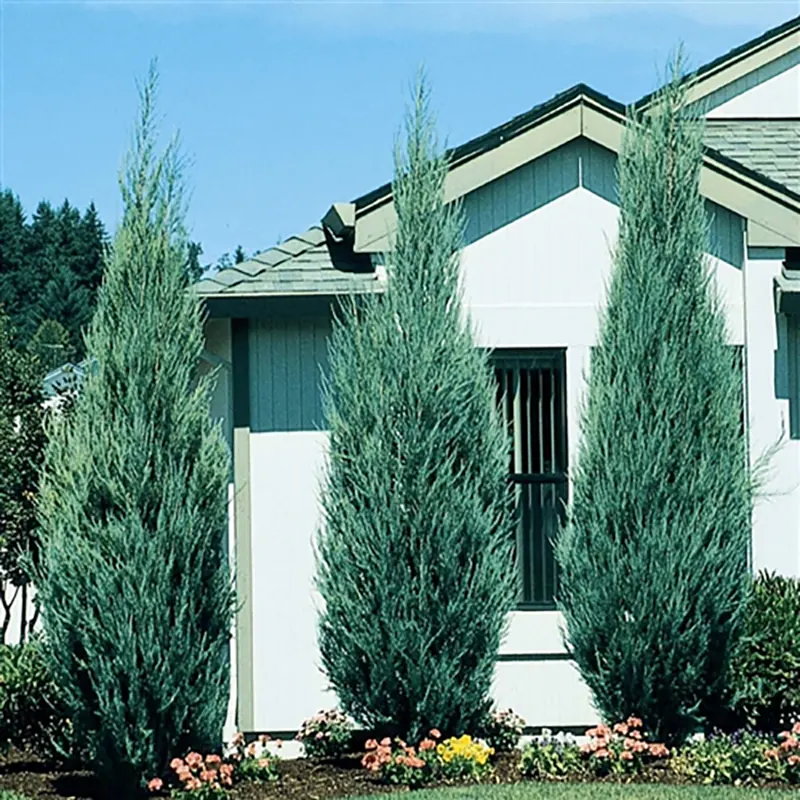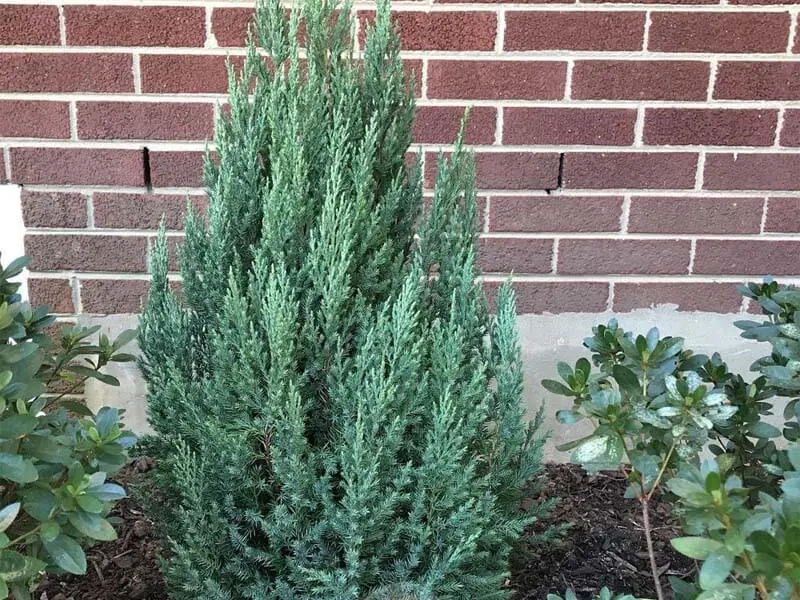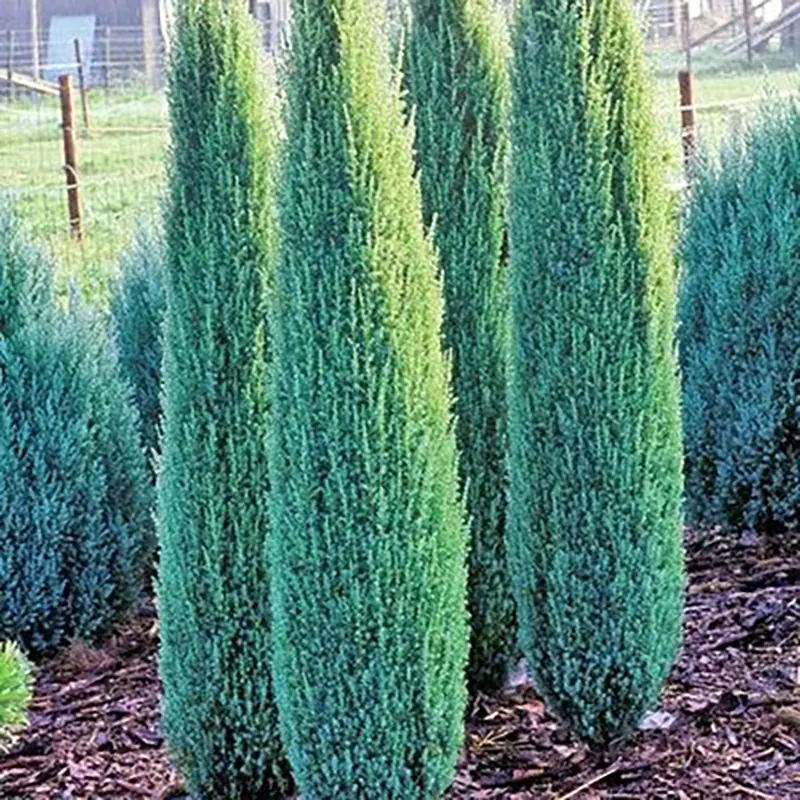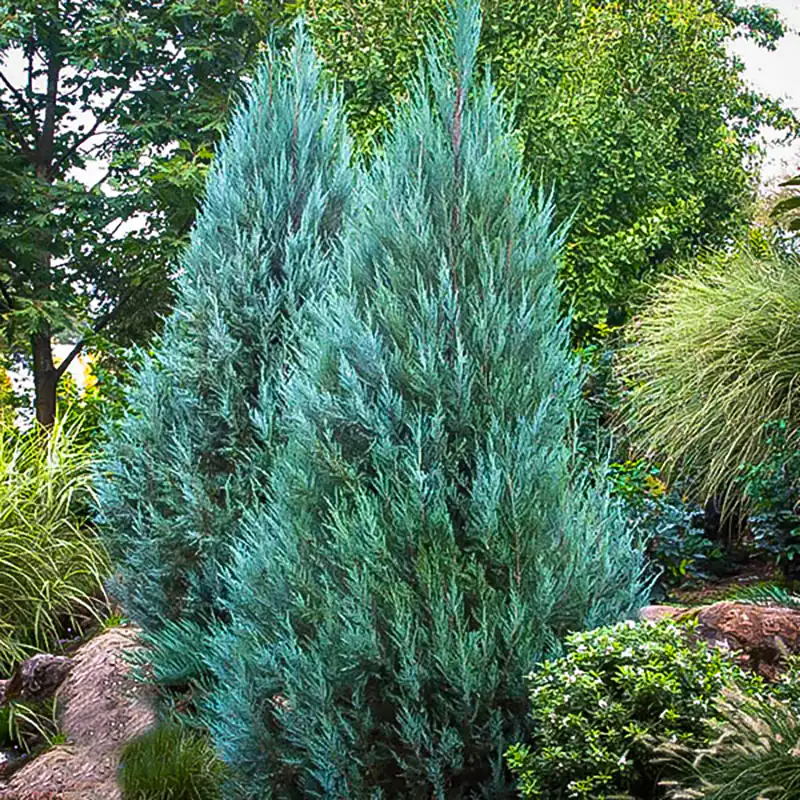Blue Point Juniper | Bonsai Care Sheet
One of the most spectacular bonsais you can grow is the Blue Point Juniper. It’s actually a variety of the Chinese Juniper. It’s incredibly popular in most countries, especially in the United States. So we decided to put together a care sheet for it so you can see how to maintain it.
Here are the topics we’ll cover for the Blue Point Juniper:
Here are the topics we’ll cover for the Blue Point Juniper:
01
02
03
04
05
06
07
08
Quick Blue Point Juniper Bonsai Care Sheet
We’re going to give you the full details on Juniperus Chinensis Blue Point in a moment, but we’d like to start with a TL;DR on how to care for it. Here’s you’ll find an overview of the article, while the details are explained lower down. It’s to save you time from going through the entire article if you only need a reference.
Recommended soil | Any, but aim for light, sandy soil |
Watering | Water young trees more regularly than mature ones |
Potting season | Autumn |
Shaping and pruning season | Any season, but no pruning when too hot or cold |
Light | Full sun or partial shade |
Fertilizing | Slow-release bone meal or organic fertilizer in spring |
Propagation methods | Cuttings taken in spring |
Pests and diseases | Highly resistant, but check for Phomopsis blights, Kabatina blight, root rot, and spider mites |
Growth patterns | Grows fast in spring, but is easy to maintain |
Recommended styles | Formal upright, spiral, informal upright, slanting |
Native Area | China, Japan, Korea, Russia, Myanmar |
Scientific Classification
- Clade: Pinophyta
- Order: Pinales
- Family: Cupressaceae
- Genus: Juniperus
- Species: Chinensis
- Variety: Blue Point
How to Care for a Blue Point Juniper Bonsai
Since the Blue Point Juniper is a sub-species of the Chinese Juniper, there’ll be a few points that will remain the same. However, we’ll try to give you the specific details anyway in case you don’t know the species very well.
Please feel free to read our detailed Juniper bonsai care guide for the entire genus.
Best Soil
While the Blue Point Juniper can handle most soil types, it prefers light, sandy soil. It’s best to establish stability as soon as you plant your bonsai, letting the roots settle in. As long as there’s sufficient drainage, it will be content. You can place drainage rocks at the bottom of the pot to assist with this.
The conifer can live with acidic or alkaline soil, but it prefers the former. A slightly acidic touch will help it absorb nutrients, especially nitrogen, magnesium, and potassium. The soil you use should be able to retain these elements as much as possible so the water doesn’t wash them out.
Watering
You’ll want your Blue Point Juniper to develop extensive roots into the bonsai pot. To achieve this, you should drown the soil once a week with regular watering in between. It will help the small tree grow faster as the roots reach to the sides.
If you’re dealing with a young bonsai, it should receive plenty of water in spring and summer. More mature trees don’t need as much, and you can test the soil to see when it’s dry. You can also use a tray to see how thirsty it is, watching for when the liquid is gone.
Repotting
To minimize the damage to your Blue Point Juniper, we recommend repotting in the fall. You begin by digging the soil of the outskirts of the pot so you don’t hurt the root ball. Work around in circles as you reach as far into the pot as needed.
You’ll need to lift the root ball safely from the soil before giving it a good wash. If you need to prune any lengthy roots, do so carefully without damaging the main mass. You can place the roots in water while you prepare the next container.
Make sure you have a ditch in the soil that’s large enough to contain the root ball. After you put the bonsai in, you can cover the roots with the other soil until it reaches the trunk base. Once you have it settled in, make sure you provide enough water so the tree doesn’t stress too much.

Shaping and Pruning
The Blue Point Juniper doesn’t grow wildly, so you won’t spend too much time maintaining it. Our recommendation is to let it grow for a season or two before you work on any design pruning. There’s no specific season you should focus on, but don’t cut any foliage when it’s incredibly hot or cold.
One method bonsai enthusiasts use is spiral pruning. It involves tying a ribbon to the apex branch or branches and winding it down to the base. With sharp shears, they cut away at the needles between the ribbons to obtain a spiral design. It gives the foliage a stunning design, which looks amazing when the berries appear.
Location and Sunlight
This gorgeous tree does well in hardiness zones 4 to 9. It’s content with full sun or partial shade, as long as it receives between six and eight hours of direct sunlight in the day. You won’t have to worry about strong winds outside, as the stems and foliage are strong enough to handle them.
When it hits the middle of summer and the heat is intense, it can handle semi-drought conditions. However, it may be best to provide some shade when the sun is at its highest. It protects your small Blue Point Juniper from damage on the needles, and you can give it more sun in the late afternoon.
Fertilizing
This species does most of its growing in spring, so we recommend feeding it as soon as the season begins and you see new growth. If you have new soil, the chances are that it already has all the nutrients it needs. However, the soil you’ve had for more than one year should receive some fertilizer.
You can use any balanced fertilizer that releases slowly. If you’re worried that it’s not growing enough, you can aim for one with a higher nitrogen content than phosphorous and potassium. Bone meal is also an option, and the Blue Point Juniper’s roots love it.
Propagation Methods
If you want to propagate a Blue Point Juniper from a mature tree, you should take cuttings in early spring when you see new growth. It will take an entire year for it to grow new roots, and you should see some resistance when you gently tug it the following year.
You need to restrict the size to no more than 10 inches but at least 8 inches. Select a healthy branch and place some rooting hormone on the base. To encourage it to drink as much water as possible, you can make small slits at the base in the bark.
Pests and Diseases
Your Blue Point Juniper bonsai is resistant to most pests, although spider mites may become a problem if you aren’t careful. While the tree may have issues with deer in the wild, you won’t have that problem with your miniature version. When it comes to overwatering and diseases, watch out for Phomopsis blights, Kabatina blight, and root rot.
Growth Patterns
You’ll have a vigorous grower on your hands, mostly in springtime. You can easily maintain it, and you can even let it get out of hand for a year or more before you cut back. It may take a few years before you see any berries on your bonsai.
Recommended Styles
Some of the more popular styles we recommend are formal upright, informal upright, and slanting. You can even try cascading, but its wild nature may not conform to your design. As mentioned with shaping, you can also add the spiral style to a formal upright form.

How to Identify the Blue Point Juniper Species
Now that you know how to care for the Blue Point Juniper bonsai, we’d like to show you how to identify it. We’ll show you the traits that differ from the parent species, as well as from others in the genus.
Size
In nature, the Blue Point Juniper grows to about 12 ft. high with a width of 8 ft. It has a conical shape, with the base wider than the apex, slimming down the higher it goes. We recommend simulating the same style with your bonsai.
Leaves
The needles are blue-green, hence the name for the sub-species. As the tree matures, it may change to light green with the blue vanishing. New shoots will retain the blueish sheen, which puts on a spectacular display for most of the year. Since it’s evergreen, you don’t need to worry about the leaves falling off in winter.
Trunk, Branches, and Bark
There’s usually one central trunk with a brown or red-brown bark. As the bonsai grows, it will spread branches at various levels that reach up towards the sky. If you want to retain the conical shape, you’ll need to prune the lower branches so they don’t extend too far.
Berries
The Blue Point Juniper berries start as powder blue in spring, which extends into later winter. It creates a fantastic display against the blue-green foliage. As they mature, they may turn a purple or brown color, depending on how ripe they are.
Common Issues When Caring for a Blue Point Juniper Bonsai
People that own the Blue Point Juniper bonsai usually come across the same issues. We might have covered some of these already, but here are some specific details on how to deal with them. It may save your small tree in the long run.
- Kabatina blight: You’ll need a fungicide that contains copper, mancozeb, or thiophanate-methyl.
- Phomopsis blight: You should apply a Bordeaux mixture, or aim for fungicides with mancozeb or copper.
- Root rot: Use any root rot fungicide in spring, or change the soil and water it less than usual
- Spider mites: Remove any mites you see by hand and spray a pesticide that’s safe for Junipers
- Leaves turning brown: This problem is caused by one of the blights mentioned above or insufficient nutrients in the soil.
Interesting Facts About Blue Point Juniper Bonsai
Finally, we have some exciting facts we’d like to share with you regarding the Blue Point Juniper. We found these to be intriguing, and you can show off your trivia knowledge to your friends and family. If there’s anything else you know, please feel free to share it with us.
- These Junipers are often used as windbreakers in gardens or in front of corporate buildings. Some people use it to protect other trees sensitive to strong winds
- Birds love using the foliage to shield from the wind or build nests
- As a bonsai, it does well with wiring, and you can bend the versatile branches into most shapes
- They can be extremely rare to find for sale as bonsais and are therefore treasured by most enthusiasts.

Final Thoughts
The Blue Point Juniper is an outstanding bonsai, especially if you grow it in the right style and shape. It has some gorgeous features, and we love the color of the foliage and how the needles smell. How do you feel about it? Do you own one, and how did you style it? Please let us know.
FAQ About Blue Point Juniper Bonsai
As usual, we like to end our care sheets with questions people always ask about the species. We’ve found a few queries online, but you can also contact us if there’s anything else you’d like to know. We tried to cover as many aspects as possible, but you never know.
The Blue Point Juniper is a moderate grower. It usually reaches about 12 ft. high by 8 ft. wide in nature. You can easily grow it as a bonsai to replicate how the tree develops naturally. It’s a stunning conifer that many people value for its foliage.
It grows steadily, with an average rate of six to twelve inches per year. When it reaches ten years of age, it will already have its 12 ft. height. Most bonsais that reach this maturity level will stop expanding, with the branches becoming thicker instead.
The Blue Point Juniper is one of the faster-growing trees in the Juniperus genus. As such, you’ll need to keep pruning your bonsai to keep it small and in shape. It generally develops new leaves and shoots in spring, which is when heavy maintenance is needed.
If you’re planting it in the garden, Blue Point Junipers need to be about 5 to 6 ft. apart. Should you be planning a bonsai forest or landscape, you can aim between 6 to 10 inches apart. The key point is that you have enough space on the sides for it to expand if necessary.
Its roots prefer to remain in the topsoil, about 3 to 4 inches for bonsais, while it can extend to 24 inches in your garden. There may be anchor roots that could go down to the bottom of the pot, so we recommend you use a shallow bonsai container as opposed to a deep one.
This variety of Juniper enjoys sandy soil, but you can use a bonsai mix for your pot. You’ll need to place it outside so it can soak in the full sun for several hours. Even if it rains, it will enjoy the downpour, as long as there is sufficient drainage.
If your Blue Point Juniper bonsai is fertile, it should show blue-green berries in the late spring, which will develop into late winter. While it may be powder blue at first, you should see the berries darken into purple or brown as they ripen by the second season.
When you see the needles turning brown, it may be an indication that there are spider mites on them. It could also be due to tip blight. You’ll need to inspect the leaves to see if you need an insecticide or fungicide. We also recommend using a nitrogen-based fertilizer during spring to help the growth.
If your dog eats the berries, branches, or needles of the Blue Point Juniper, there’s a chance it will get sick. You may see it throw up or not feel well for a few days. However, it won’t kill your dog unless it continues to eat large quantities of any of these parts. It may also cause diarrhea, which can be harmful to your pet.
Any other bonsais you have with blue foliage, flowers, or seeds will go well next to a Blue Point Juniper bonsai. You can also opt for conical cypresses to match the style. There are some bamboo plants that will make great companions, and you can also go for a Money Tree bonsai.







